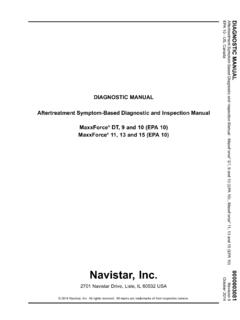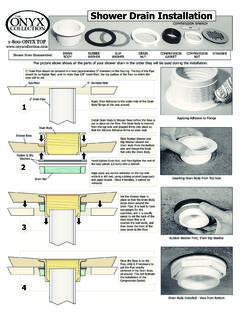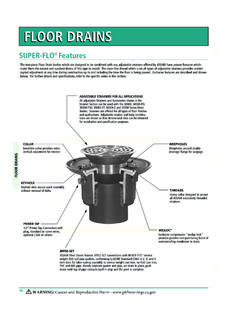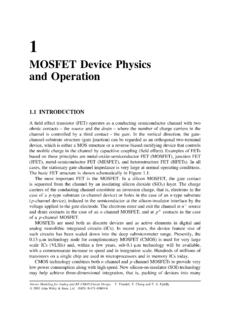Transcription of How to Do a Battery Parasitic Drain Test by …
1 30 AFuse 25A Fuse 20 AFuse15 AFuse10 AFuse DropMeasured inmV forFuseTested1 How to Do a Battery Parasitic Drain Test by Checking the Voltage Drop Across FusesThe left vertical column of the chart above list possible voltage drops across the fuses listed in the top horizontal row. The remaining rows and columns list the amperage flow through the fuse based on the voltage drop of the fuse tested. If your measurement is somewhere in between the references listed for the voltage drops given, then you know that the amperage flowing through the fuse has to be somewhere in between those references listed. The figures listed are approximate. They are based on the mV drop per amp ofmechanical fuse connections using a source of a fully charged Battery . How to do the Parasitic Drain test is done with the engine off, and with all computers asleep . Sleep mode can take up to two hours on some vehicles after shut off.
2 Some scan tools can be used to put all computers to sleep . If the fuse box is under the hood, or in the vehicle, you will have to compensate for the hood light, or interior lights that will be on if the hood is up, or the door/s are open. You could pull the fuse for these lights, but the Parasitic Drain could be in that circuit. Knowing how much current is flowing when the light or number of lights are on can aid your diagnosis. You could just remove any light bulb that will be on depending on where the fuse box or various BECs (bussed electrical connectors) are located. Once all computers are asleep. Check each fuse in the vehicle with a voltage drop. Put the meter in the millivolts range and place the probes across each fuse as illustrated below. Just ignore any negative (-) sign on the meter. The reading will be accurate regardless of probe positions. Normal total Parasitic amperage will range from.
3 035A (35mA) to .055A (55mA) depending on the vehicle. You will not see all of thistotal going through just one fuse. Many computers or modules will have memory circuits with nominal amounts of milliamps required to keep them active, and they may be protected by different fuses. If you see a voltage drop across any one fuse that indicates more than 40mA (.040A), I would investigate that circuit for excessive the wiring diagram, identify all the components that the fuse in question protects, then unplug each protected component, one at a time (always with the key off), and watch the voltage drop across the fuse to see if it reduces or is gone completely. When you unplug a component and the Drain is gone, or down to just a few milliamps, you have found a circuit with excessive Parasitic current. Pay close attention to the last connector or component you unplugged that resulted in a drop in voltage across the fuse tested.
4 The cause of the excess Drain is somewhere between that connector and the component, or it is in the component itself. Patience and attention to detail will prove successful. Be sure the engine is off, key is off, dome, hood, glove-box, trunk, etc. lights are off, and all doors are across every fuse in the vehicle, there may be numerous fuse boxes in different locations. When you find a fuse that does not protect a computer/module but has any amount of voltage drop, investigate that circuit. Use a wiring diagram, component location guide, harness routing views to help. Once you have nailed the circuit with the excessive Drain , consult the fuse box or BEC cover if available or a wiring diagram to see what components are protected by the fuse. If the fuse protects more than one component, then you need to put only that fuse back in and unplug those protected components (always with key off), one at a time.
5 If all the fuses have been tested and no excessive voltage drop is found, yet there is a Drain , suspect the generator voltage regulator circuit, or any component protected by an inline fuse. You can voltage drop test the inline fuse by piercing either end and using you voltmeter just as you did across fuse box fuses. Be sure to seal it. Meter set to read probe tips touchexposed metal on topof both sides of fuse. Investigate:1. Computer/Modulecircuits with excessivevoltage drop: 2. All non-computer/module circuits withany voltage drop. How to Do a Parasitic Drain Test by Checking the Voltage Drop Across Fuses2









